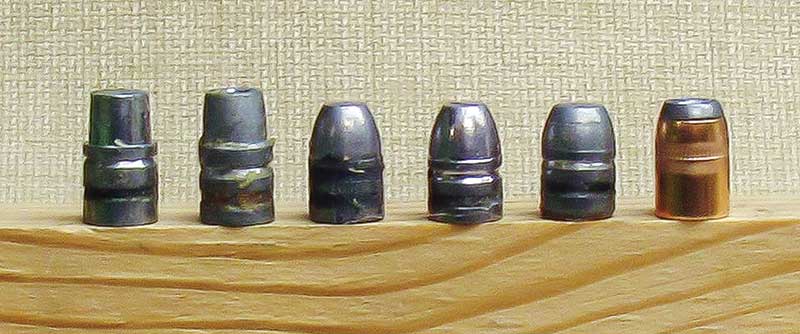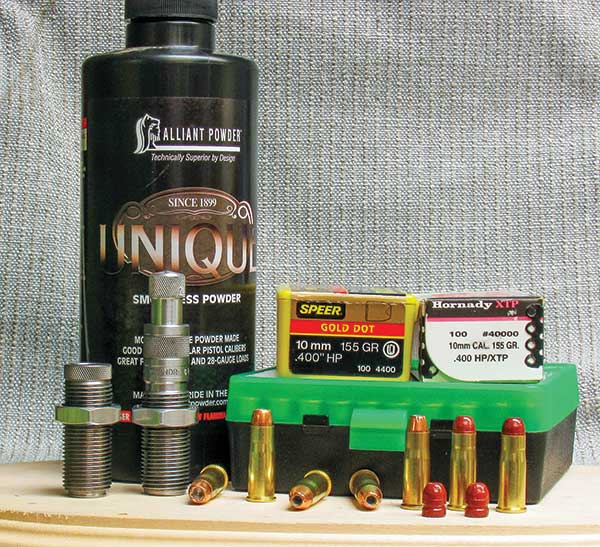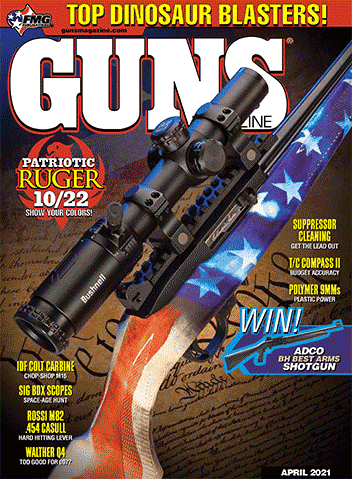Levergun Loads: .38 W.C.F.
.40 cal classic still worthwhile
Reloading the .38-40, more commonly known as the .38 WCF, is not quite the same as loading, say, the .44 Special or .45 Colt. Not difficult, just different. Since the .38 WCF is a bottleneck cartridge, carbide sizing dies are not available. This requires case lube before sizing and I use Hornady Spray Lube exclusively. It doesn’t take much experimenting to find out just how much lube is required. I place a layer of empty cartridges in a plastic box, spray, shake, spray, shake and spray again.
Problems
In the past, one of the problems was the fragile case mouth. Contact the die slightly off-center and the case is gone. This was especially true with older Remington and Winchester brass. Today, I buy only Starline brass which is the strongest available. This is strong brass without the inherent weakness of earlier offerings and works extremely well in the RCBS Model 2000 Progressive Press. Another warning is offered for those who may try to reload once-fired .38-40 brass. For some reason, Winchester’s factory loaded rounds have primers which seem crimped-in. If the primer pocket is not reamed before re-priming these cases, it’s very easy to bend or break a priming punch.
Earlier bullet molds for the .38-40 drop bullets without crimping grooves. Newer molds today from both Lyman and RCBS do have crimping grooves. Jacketed bullets made for the .40 S&W or 10mm also do not have crimping grooves, however CMA offers custom bullets at reasonable prices with the crimping groove wherever it is desired. I just told them I wanted to use the bullets with the .38-40 and the groove was placed exactly where it needed to be.
When loading bullets without crimping grooves I find it necessary to do two things. After resizing and depriming, I use the Lee Universal Expanding Die to just kiss the mouth of the case enough to allow the bullet to enter. This provides the tightest case-mouth-to-bullet fit possible. Once the case has been primed and the proper powder charge placed, I then use the seating die to seat only and not crimp. Once I have a supply of loaded rounds properly seated, I then add the extra step of using the Lee Factory Crimp Die. This, along with the very slight expansion of the case mouth, goes a long way to prevent bullets from seating deeper into the case while traveling from the magazine tube, to the lifter and on to the chamber. It also prevents bullets from moving forward under recoil.
Loads
Specially selected loads, both powerful and accurate enough for hunting deer-sized critters, are assembled with Aliant’s #2400 and Hodgdon’s IMR4227. These loads are only used in my Winchester Model 1892s. Hornady’s 180 XTP clocks out at 1,761 over 19.5 grains of #2400 and puts three shots into 7/8″ at 50 yards. Moving up to 20.5 and 21.5 grains of #2400 results in muzzle velocities just over 1,800 fps and 1,900 fps respectively. The latter load is still 10% under maximum loads listed in reliable sources. With this same bullet and 22.5 grains of #4227 muzzle velocity comes in at 1,600 fps with a group just over 1″.
Another jacketed bullet I like is Speer’s 180 GDHP. With 20.5 grains of #2400 the muzzle velocity is 1,825 fps and results in a group just under 1″ while 23.5 grains of #4227 is just under 1,700 fps with a group just slightly over 1″. CMA’s 180 jacketed hollowpoint shoots exceptionally well with both #2400 and Unique. Using 20.0 of #2400 gives a muzzle velocity of 1,765 with a three-shot group at 45 yards of just over 1″ while 10.0 grains of Unique gives a very pleasant shooting 1,430 fps and a group well under 1″.
Milder shooting loads are assembled with cast bullets, with most of my loads being assembled with Oregon Trail’s 180-grain RNFP. My standard 8.0 grains of Unique gives a very pleasant shooting 1,233 fps while placing three shots in a very tight 1/2″ at 45 yards; 6.0 grains of Red Dot is right at 1,200 fps with three shots just under 1″; a milder shooting load, also under 1″, is 6.0 grains of Trail Boss at just under 1,000 fps.
Currently, Cimarron offers both the Model 1866 and Model 1873 replica Winchesters in .38-40 but this caliber is not cataloged in the current list of Winchester/Miroku leverguns. I found my original .38-40 Winchester 1892 at a gun show in the closing days of the last century and my late good friend and talented gunsmith Keith DeHart was able to put it back in first-class shooting shape.







